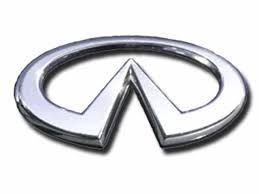G35 Sedan V6-3.5L (VQ35HR) (2008)
/Page-1274002.png)
-
Disconnect the battery cable (negative terminal) or the power supply fuse before installing, removing, or touching the xenon headlamp (bulb
included). The xenon headlamp contains high-voltage generated parts.
-
Never work with wet hands.
-
Check the xenon headlamp ON-OFF status after assembling it to the vehicle. Never turn the xenon headlamp ON in other conditions. Connect the
power supply to the vehicle-side connector. (Turning it ON outside the lamp case may cause fire or visual impairments.)
-
Never touch the bulb glass immediately after turning it OFF. It is extremely hot.
CAUTION: Comply with the following cautions to prevent any error and malfunction.
-
Install the xenon bulb securely. (Insufficient bulb socket installation may melt the bulb, the connector, the housing, etc. by high-voltage
leakage or corona discharge.)
-
Never perform HID circuit inspection with a tester.
-
Never touch the xenon bulb glass with hands. Never put oil and grease on it.
-
Dispose of the used xenon bulb after packing it in thick vinyl without breaking it.
-
Never wipe out dirt and contamination with organic solvent (thinner, gasoline, etc.).
Working with HFC-134a (R-134a)
CAUTION:
-
CFC-12 (R-12) refrigerant and HFC-134a (R-134a) refrigerant are not compatible. Compressor malfunction is likely to occur if the
refrigerants are mixed, refer to "CONTAMINATED REFRIGERANT" below. To determine the purity of HFC-134a (R-134a) in the
vehicle and recovery tank, use Refrigerant Recovery/Recycling Recharging equipment and Refrigerant Identifier.
-
Use only specified lubricant for the HFC-134a (R-134a) A/C system and HFC-134a (R-134a) components. Compressor malfunction is
likely to occur if lubricant other than that specified is used.
-
The specified HFC-134a (R-134a) lubricant rapidly absorbs moisture from the atmosphere. The following handling precautions must be
observed:
-
Cap (seal) immediately the component to minimize the entry of moisture from the atmosphere when removing refrigerant components
from a vehicle.
-
Never remove the caps (unseal) until just before connecting the components when installing refrigerant components to a vehicle.
Connect all refrigerant loop components as quickly as possible to minimize the entry of moisture into system.
-
Use only the specified lubricant from a sealed container. Reseal immediately containers of lubricant. Lubricant becomes moisture
saturated and should not be used without proper sealing.
-
Never allow lubricant (Nissan A/C System Oil Type S) to come in contact with styrene foam parts. Damage may result.
CONTAMINATED REFRIGERANT
Take appropriate steps shown below if a refrigerant other than pure HFC-134a (R-134a) is identified in a vehicle:
-
Explain to the customer that environmental regulations prohibit the release of contaminated refrigerant into the atmosphere.
-
Explain that recovery of the contaminated refrigerant could damage service equipment and refrigerant supply.
-
Suggest the customer return the vehicle to the location of previous service where the contamination may have occurred.
-
In case of repairing, recover the refrigerant using only dedicated equipment and containers. Never recover contaminated refrigerant into the
existing service equipment. Contact a local refrigerant product retailer for available service if the facility does not have dedicated recovery
equipment. This refrigerant must be disposed of in accordance with all federal and local regulations. In addition, replacement of all refrigerant
system components on the vehicle is recommended.
-
The air conditioner warranty is void if the vehicle is within the warranty period. Please contact Nissan Customer Affairs for further assistance.
General Refrigerant Precaution
WARNING:
-
Never breath A/C refrigerant and lubricant vapor or mist. Exposure may irritate eyes, nose and throat. Remove HFC-134a (R-134a)
from the A/C system, using certified service equipment meeting requirements of SAE J-2210 [HFC-134a (R-134a) recycling equipment],
or J-2209 [HFC-134a (R-134a) recovery equipment]. Ventilate work area before resuming service if accidental system discharge occurs.
Additional health and safety information may be obtained from refrigerant and lubricant manufacturers.
-
Never release refrigerant into the air. Use approved recovery/recycling equipment to capture the refrigerant each time an air
conditioning system is discharged.
-
Wear always eye and hand protection (goggles and gloves) when working with any refrigerant or air conditioning system.
-
Never store or heat refrigerant containers above 52 °C (126 °F).
-
Never heat a refrigerant container with an open flame; Place the bottom of the container in a warm pail of water if container warming is
required.
-
Never intentionally drop, puncture, or incinerate refrigerant containers.
-
Keep refrigerant away from open flames: poisonous gas is produced if refrigerant burns.
-
Refrigerant displaces oxygen, therefore be certain to work in well ventilated areas to prevent suffocation.
-
Never pressure test or leakage test HFC-134a (R-134a) service equipment and/or vehicle air conditioning systems with compressed air
during repair. Some mixtures of air and HFC-134a (R-134a) have been shown to be combustible at elevated pressures. These mixtures, if
ignited, may cause injury or property damage. Additional health and safety information may be obtained from refrigerant
manufacturers.
